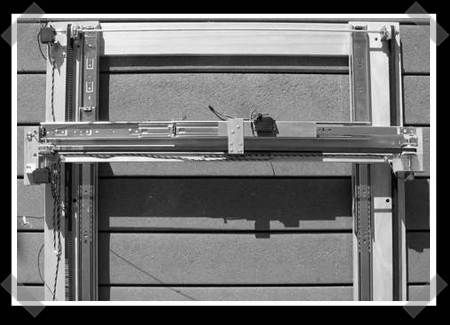[CarlS] wanted to build a low cost x y table for display on teletoyland.com. He realized that to keep cost low, he could use hobby servos instead of stepper motors. Exact precision wasn’t a big issue here, so the hobby servos would be perfectly acceptable.
Though Linear hobby servos are available, he decided that the cost was prohibitive. He used normal hobby servos, but had to modify their internals to get the exact amount of travel necessary. Many people modify the hobby servos for continuous rotation, but this would cause a loss in the ability for exact positioning. Instead, he replaced the potentiometer that measures the position of the servo with a 10 turn potentiometer. This allowed him 10x the travel.
Using timing belts and drawer guides, he constructed the frame and motion assemblies. The timing belts were chosen for their cheap price and no slip construction and are pulled by custom built pulleys.
The unit is controlled via some PHP scripts, that he doesn’t expand on, via a serial connection to a SSC-32 board. The servos connect directly to the the SSC-32. Go ahead and give it a try, or watch the video to see it in action.
[youtube=http://www.youtube.com/watch?v=hLkY4V-H80w]
















I like this idea a lot. With a good PWM generator, you could actually get decent resolution and speed for X-Y positioning tasks. Not so much for plotting and machining, but maybe pick and place operations like building mosaics out of different colored M&Ms or legos, automatic puzzle solver, etc.
The disadvantage is that you also get 10x the positioning error, and the resolution can get pretty bad.
Also, what’s stopping the servo from breaking the potentiometer? They must have removed the notch to get the servo to make 10 full turns, and there is nothing from stopping it making a 11th turn. Maybe a little window comparator to turn off the servo when it gets to close to the end of the potentiometer?
or a hard stop on the axis …
Yes, there is a resolution limit to this approach, but it works pretty well with the digital servos we use over the size of table we have (~30″). Smaller tables would have better precision, and there are better potentiometers out there.
Since it’s a closed loop system, the potentiometer never turns past the limits. We basically took out the single turn pot and used a 10-turn one in it’s place, so instead of the typical 90-180 turn, you get 900-1800 degrees. In practice, hobby servos don’t actually use the full range, so we are using ~6 turns.
thanks for the info on the scripts.
well. this is great idea but the problem that we havent a detailed steps to accomplish this project ..i had read other sites but also they explain same thing ..cud u please list the software u used here ..more detailed steps, pic’s…i’m so intersted to make this project and tx .